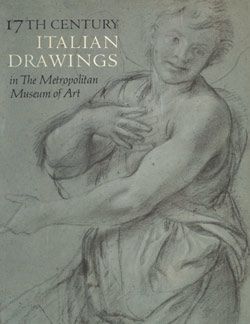The Death of Saint Francis Xavier
Ciro Ferri Italian
Not on view
The most celebrated seventeenth-century representation of the death of Saint Francis Xavier (Francisco de Jasso, 1506-1552) is Carlo Maratti's painting commissioned 1674 and completed 1679 on the altar dedicated to that saint in the Chiesa del Gesù, Rome. The architectural and sculptural elements of this altar were designed by Pietro da Cortona (1596-1669), but work on the altar was not begun until three years after his death. Cortona's early involvement with this enterprise makes it possible that his principal assistant, Ciro Ferri, may have hoped to obtain the commission for the painted altarpiece. Though Maratti's composition has a square top and Ferri's a rounded one, they have a number of figural elements in common, especially the pose of the dying saint in the foreground, and it is hard to say if Ferri was influenced by Maratti or vice versa. Ferri's interest in this composition is evidenced in two rapid pen sketches for the figure of the dying Francis Xavier holding a cross in Istituto Centrale per la Grafica, Rome (nos. 124465 and 124469; see: Langheit 1962, pp. 107, 213, note 166). Another episode from the life of Francis Xavier, The Baptism of the Heathen, was drawn or painted by Ciro Ferri; this scene was engraved by Jean Mariette (not listed by Le Blanc; an impression is in the Print Department of the Metropolitan Museum).
Manuela B. Mena Marqués points out that in the Roberto Longhi Archives in Florence there is a photograph, classed as school of Maratti, of a painting that corresponds in almost every detail, including the arched top, to the Metropolitan drawing. In the painting, however, two male spectators appear behind the standing turbaned figure on the right. Its high finish suggests it may be a study for an engraving, but the print does not seem to have been issued.Though the drawing has no traditional attribution to Ferri, in style it is typical of him.
Due to rights restrictions, this image cannot be enlarged, viewed at full screen, or downloaded.



